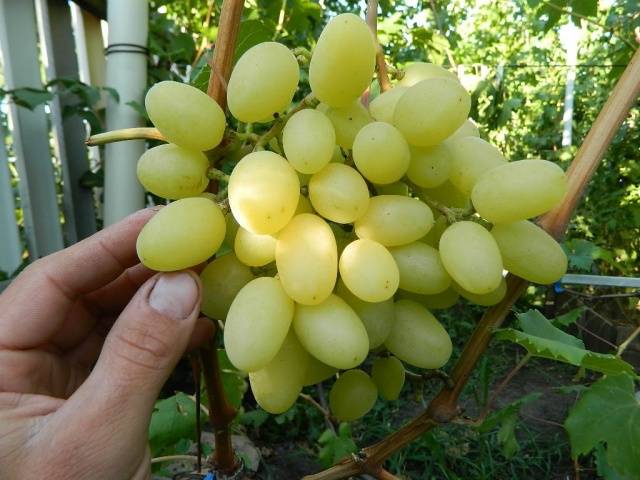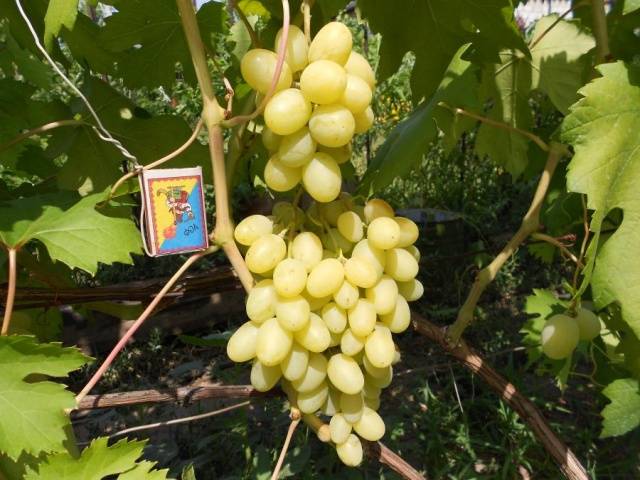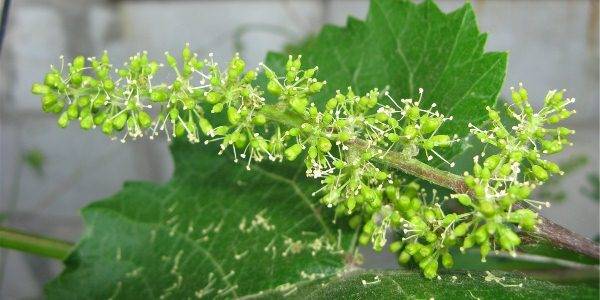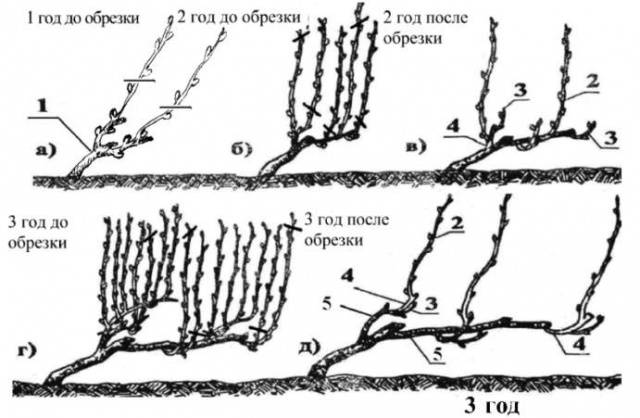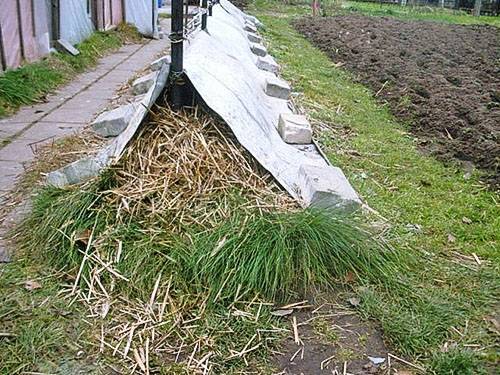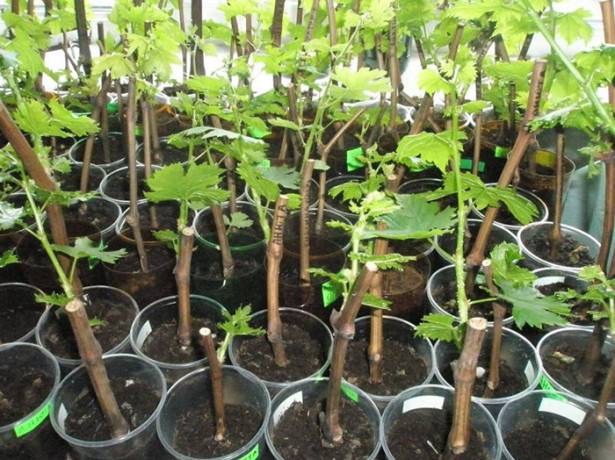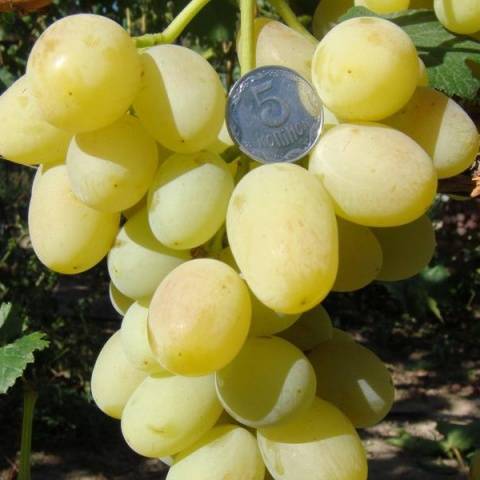Content
The Lily of the Valley grape variety is a novelty on the horticultural market. The first information about him appeared only in 2012, when the Ukrainian breeder V.V. Zagorulko presented his "brainchild" for everyone to see. Due to the lack of proper testing and the high cost of seedlings, the culture did not immediately gain popularity among winegrowers. But over time, it became known that in addition to excellent external qualities and a unique taste, grapes have good resistance to diseases, pests, and adverse weather conditions. The remarkable characteristics and positive cultivation experience became the basis for the widespread distribution of grapes. For those who are still unfamiliar with this culture, we will give in our article a photo, a description of the Lily of the Valley grape variety, reviews of experienced gardeners about it.
Progenitors of the variety
Many breeders use the Talisman variety as the progenitor to obtain new grape varieties. It is distinguished by its large-fruited nature, resistance to adverse external factors. "Talisman" forms functionally female flowers. It was "Talisman" that became the basis for obtaining a new variety called "Lily of the Valley". It was decided to supplement "Talisman" with a variety with well-developed male flowers. The "Kish-Mish radiant" was used as a pollinator. This variety affected not only the yield of "Lily of the Valley", but also its taste and color.
Thus, by crossing "Talisman" and "Kish-Mish radiant", it was possible to obtain a new variety with unique qualities. Its characteristics truly amaze even seasoned winegrowers. Connoisseurs of taste say that having tasted the berry of this variety, it is impossible to forget the nutmeg taste with the aroma of lily of the valley and white acacia.
Varietal characteristics
Before planting a grape seedling on your site, you should familiarize yourself with its main characteristics in order to know what to expect from this crop. The size and taste of berries, the yield of the crop during cultivation must match the proposed description of the Lily of the Valley grapes. Significant deviations from the provided characteristics may be a sign of violation of the cultivation rules.
Description of berries
It is the characteristics of the fruit that are most of all interested in winegrowers when choosing a new variety. Berries of the "Lily of the Valley" variety in this sense occupy an advantageous position, since they combine not only excellent external qualities, but also a unique aroma.
Large grapes of the "Lily of the Valley" variety have an oval, elongated shape, sometimes resembling a heart. Fruit color is yellow. Looking at the berries, one might think that they have absorbed the heat of the sun, therefore they acquired such a bright, attractive ripeness color. On average, each fruit weighs 10, and sometimes 16 g.
The pulp of the Lily of the Valley grapes deserves special attention. It is very tender and juicy, sweet and aromatic. Light sourness and pronounced freshness make the tasters vying with each other to “shower” the variety with compliments. To appreciate the harmonious balance of muscat sweet and sour taste, it is necessary to try the Lily of the Valley grape variety at least once.
When describing the Lily of the Valley grapes, it is worth noting the quality of the skin of the berries. It is quite dense in order to withstand the effects of bees, wasps and other insects. For all its strength, the skin is very delicate, which can be appreciated by biting it.
Bunches of grapes
Lily of the valley grapes form rather large and lush bunches. Their weight can vary from 800 g to 1.5 kg. The shape of the bunches is cylindrical, the density is average. The commercial qualities of the product are remarkable.
Unfortunately, speaking of bunches, one drawback should be noted: in rainy weather, the flowers of the grapes can partially crumble, which will negatively affect the yield and appearance of the bunches. It is possible to resist weather storms with the help of timely pinching of shoots or the use of special biological products.
Ripening terms
Lily of the valley grapes are recommended to be grown in favorable climatic conditions of Ukraine, Moldova and southern Russia. At the same time, the experience of breeders shows that it is possible to successfully cultivate the variety and get a good harvest of grapes in the conditions of the Moscow region. At the same time, the climate of the region will affect in a certain way the ripening period of berries.
The medium-ripening variety "Lily of the Valley" in a warm climate yields a harvest in 130 days, after the spring budding. This period in the south of Russia falls on the second decade of August. In slightly cooler climates, grapes ripen in early September.
Features of the vine
Variety "Lily of the Valley" has vigorous bushes, up to 4 m high, which need competent formation. It is necessary to prune the vine during the first years of cultivation. A possible variant of the formation of a vine of this variety is proposed in the picture below:
It is generally accepted that Lily of the Valley stepchildren develop poorly and waste the vines' strength and energy in vain. However, in practice, there were cases when, after freezing of mature shoots, it was possible to harvest a good harvest from actively growing stepchildren.
Yield
Gardeners who have Lily of the Valley grapes on their plot note its high and stable yield. Only prolonged rains during the flowering period and late spring frosts can reduce the level of fruiting.
Bunches of grapes, after ripening, can stay on the vine for a long time. At the same time, the grape bush eventually begins to exude a bright and alluring aroma of a blooming lily of the valley. The elasticity of the berries themselves is lost, the fruits become watery.
Variety resistance
The practice of growing Lily of the Valley grapes has shown its high resistance to unfavorable external factors. At the genetic level, grapes are well protected from powdery mildew and some other diseases dangerous to the culture.
The frost resistance of the variety is good. The vineyard can withstand temperatures down to -21 without any problems.0C. According to some reviews, the temperature indicator is -250C is also not harmful to the plant.
Reproduction
Lily of the valley grapes are propagated successfully not only by seedlings, but also by cuttings, branches. Vine cuttings root well and quickly. It is necessary to grow the plant on a drained piece of land on the south side of the site. The seat should be a pit 1 m wide.
When using seedlings, you need to ensure that the grafting site remains above the ground when filling the soil. Grapes love loose nutritious soil, which can be prepared by applying mineral complex fertilizers to the soil.For rooting, planting material should be watered regularly and abundantly. In favorable conditions, already 2-4 years after planting, the vine will give the first grapes.
You can see the Lily of the Valley grapes in the video:
The video perfectly reflects the abundance and quality of the crop obtained in the second year of growing the seedling in favorable conditions.
Advantages and disadvantages
Based on the characteristics and reviews of the Lily of the Valley grape, the following advantages of the variety can be distinguished:
- unique taste and aroma of berries;
- high level of productivity;
- long shelf life of grapes in cool conditions (until mid-winter);
- good resistance to extremely low temperatures;
- the ability to reproduce by branches, cuttings;
- good resistance to many diseases.
Among the disadvantages of the variety, only two main criteria can be distinguished:
- the tendency to shedding flowers under the influence of rain;
- deterioration of the consistency of the pulp of berries during long-term storage of grapes on the bush.
Many winegrowers, having tasted the Lily of the Valley berries, are ready to forgive all the existing shortcomings of this variety, because the amazing taste is really worth investing in the cultivation of the culture.
Conclusion
Today it is difficult to find a grower who has not heard of the Lily of the Valley variety. This young culture has become famous in just a few years, thanks to its amazing taste and external qualities of berries. These grapes are relatively unpretentious and can grow even in cooler climates. Its abundant bunches and lush vines will not only delight you with a delicious harvest, but also decorate the garden. Thus, the Lily of the Valley variety will bring taste and aesthetic pleasure, requiring a minimum of care in return.
